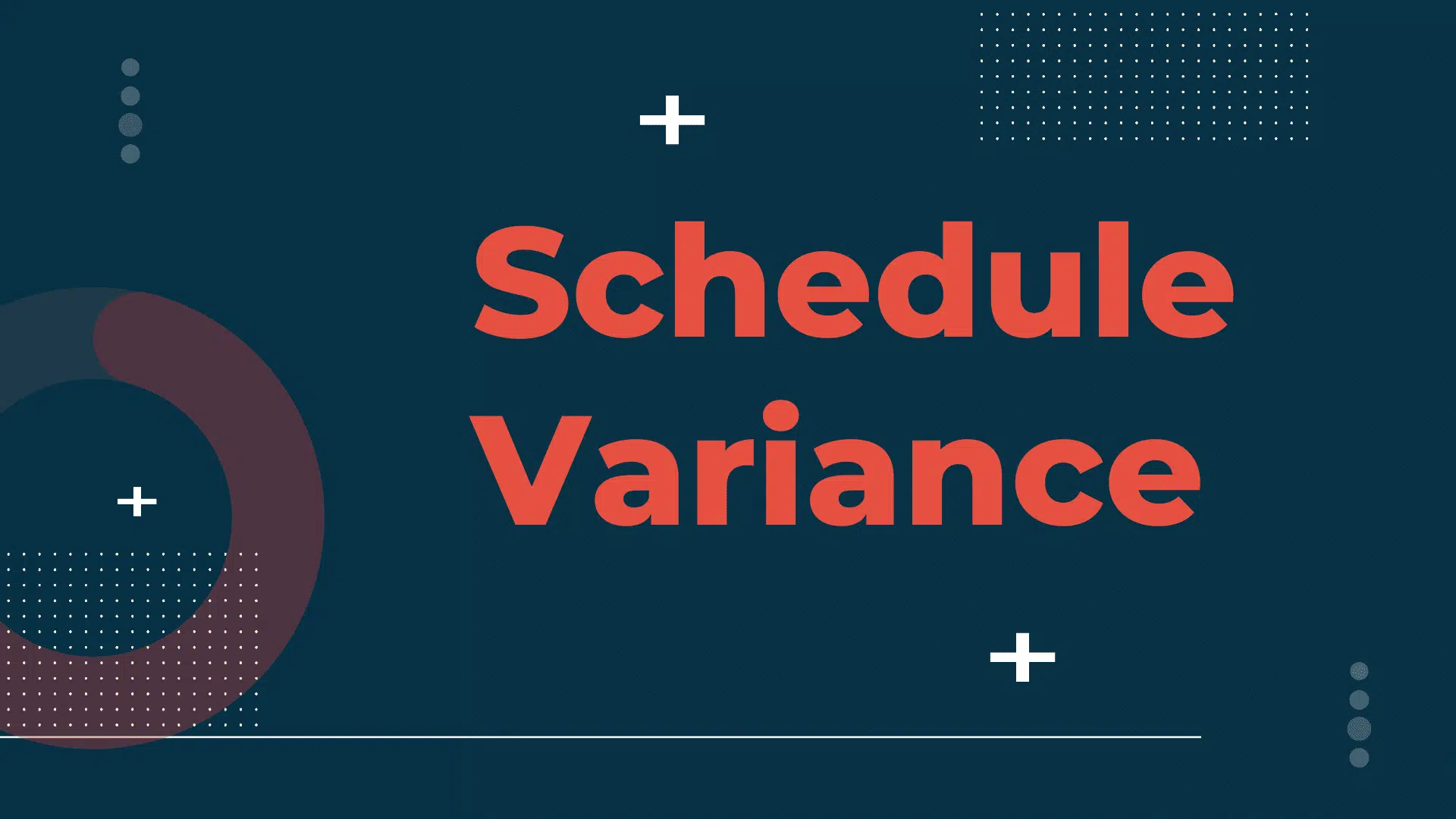Definition: Schedule Variance (SV) is the difference between Earned Value and Planned Value, and it shows how much the project is ahead or behind schedule in terms of dollars.
The term “Schedule Variance” is popularized by the PMI. Per the PMBOK Guide, “Schedule variance (SV) is a measure of schedule performance expressed as the difference between the earned value and the planned value. It is the amount by which the project is ahead or behind the planned delivery date at a given point in time.”
Schedule variance is a part of earned value management.
Schedule Variance (SV) Formula
The formula to calculate SV is given below:
Schedule Variance = Earned Value (EV) – Planned Value (PV)
The earned value is the value of complete work.
Planned Value is the value of work that you should earn according to the plan.
If the SV is positive, the project is ahead of schedule and performing well. An SV is negative; the project is behind schedule and needs corrective actions to bring the project on track. An SV value equal to zero shows the project is on schedule.
You might wonder why you need schedule variance if the schedule performance index provides the same information. But, first, understand that SPI provides efficiency in terms of percentage and variance and provides the data in dollar terms.
Both parameters provide similar information but with different metrics.
Schedule Variance Examples with Calculations
Example-1
For a project, the earned value is 40,000, and the planned value is 45,000 USD. Calculate the schedule variance.
SV = EV – PV
= 40,000 – 45,000
= –5,000 USD
Since the SV is negative, the project is behind schedule.
Example-2
For a project, the earned value is 45,000, and the planned value is 40,000 USD. Calculate the schedule variance.
SV = EV – AC
= 45,000 – 40,000
= 5,000 USD
Since the SV is positive, the project is ahead of schedule.
Summary
Schedule Variance (SV) shows if the project is ahead or behind schedule. If the variance exceeds acceptable limits, the project manager will find the root cause for this variance and take corrective actions to bring the project on schedule.
This formula and calculation are important from a PMP exam point of view. In the PMP exam, you may see a few questions asking for schedule variance calculation.

I am Mohammad Fahad Usmani, B.E. PMP, PMI-RMP. I have been blogging on project management topics since 2011. To date, thousands of professionals have passed the PMP exam using my resources.







